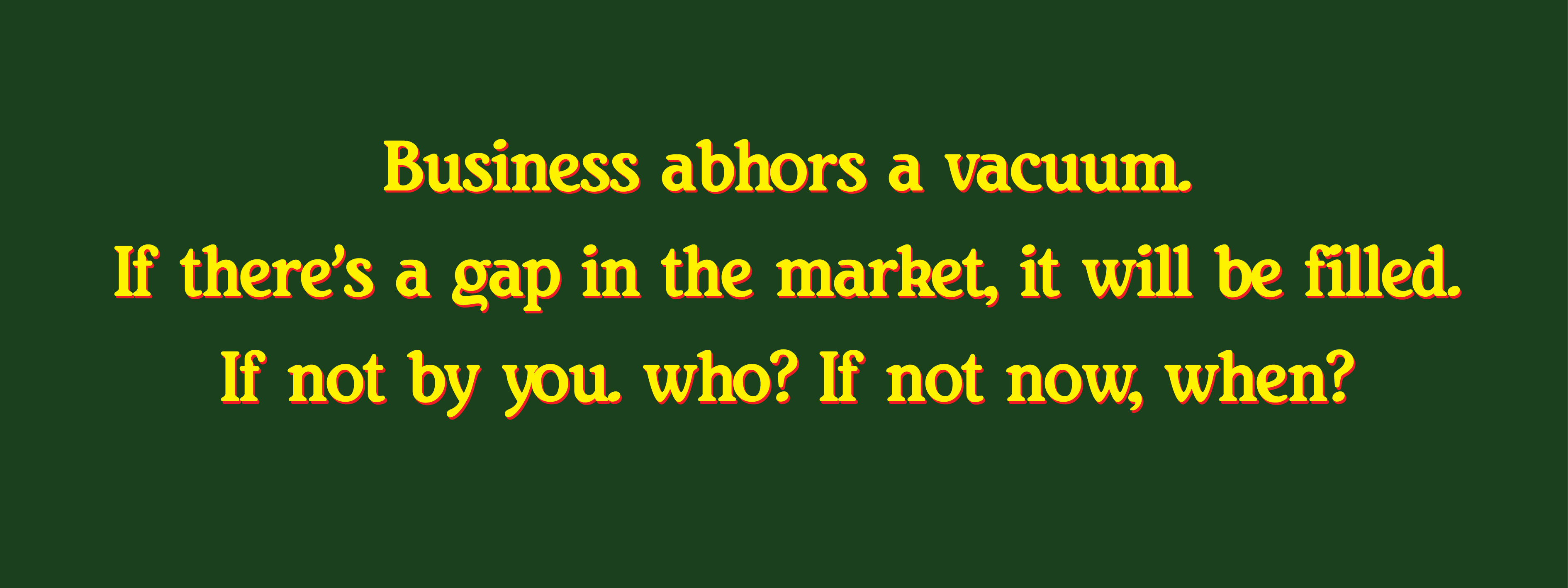It is harder than ever for Australian businesses to be unique.
Not because there aren’t any new places to go. But because, to be unique, you often need to go against the grain of public opinion. And, in this hypersocial world, public opinion is just a distraction away.
But, if you look beyond the murmurations of the twitterati, there are opportunities.
In the gaps.
I like the simplicity of Rees and Trout’s Positioning.
In every category there is a leader.
There’s a challenger.
There’s the “other” brand.
And, more often than not, the rest don’t matter.
The category leader usually creates a brand around the main category driver.
In categories where there are more than one driver, the successful leader takes the main driver and the challenger takes a secondary driver. And down the ladder we go.
If the main category driver isn’t being used, or is being used by every player in the category, it’s considered hard for any business to make a play for the main driver. Hard. But not impossible.
Take, for example, the assumption… “All supermarkets sell at the lowest possible prices.”
Take Coles and Woolworths.
Coles sell fresh food. They have a wide range. They have low prices.
Woolies sell at low prices. They have a wide range. They sell fresh food.
Both players had been trying to capture the “value” perception. And their agencies created lovely ads which studiously avoided pointing at the one thing the customer wanted to hear.
“We sell cheap.”
The gap in the market wasn’t in the market but in the mind of the customer.
A giant bloody chasm labelled “Cheap.”
Someone had to notice it sooner or later, and sooner or later someone did.
Coles made a concerted play at grabbing the main driver – low prices.
And they won.
Then Woolies got to play follow-the-leader.
Coles advertising wasn’t pretty.
But, they weren’t in it to make awards.
They were in it to make money.
Woolworths made some lovely ads.
Coles made some lovely money.
Not because they were creatively poor. But because they were strategically sound. They decided the own the thing that matters most to most grocery buyers.
And the rest has gone down, down in history.
Things are changing now. But the market is turning. And I think prices will become a major motivator again.
The opportunity for any brand is simple.
Find the gap.
If there isn’t a real category leader, stake a claim on the thing that matters most to most of your customers and make it true in everything you do.
If you have to play follow the leader, either reinvent the category or play the game differently. Ask yourself where the gap is.
Billy Beane, at the Oakland Athletics, couldn’t win by playing baseball the way his scouts said it should be played. They couldn’t afford the players. He won it by playing baseball the way statistics said it could be played. Buying ballers who played ugly but had great numbers. In the gap between players who looked good but scored average and players who played ugly but scored well there was enough room to win their division.
Volkswagon couldn’t win by being General Motors. They won by being smart.
Virgin couldn’t win by being British Airways. They won by making value fun.
Apple couldn’t win by being Microsoft. They won by making technology desirable.
Pick a different scoreboard.
Pick the thing no one else can make true but you.
Take the gap you originally saw in the market in the first place and remind your customers why you’re still the best at filling it.
Be unique.
Be relevant.
Be true.
There are always reasons to be afraid in business.
Selling what you’re good at shouldn’t be one of them.


Leave A Comment